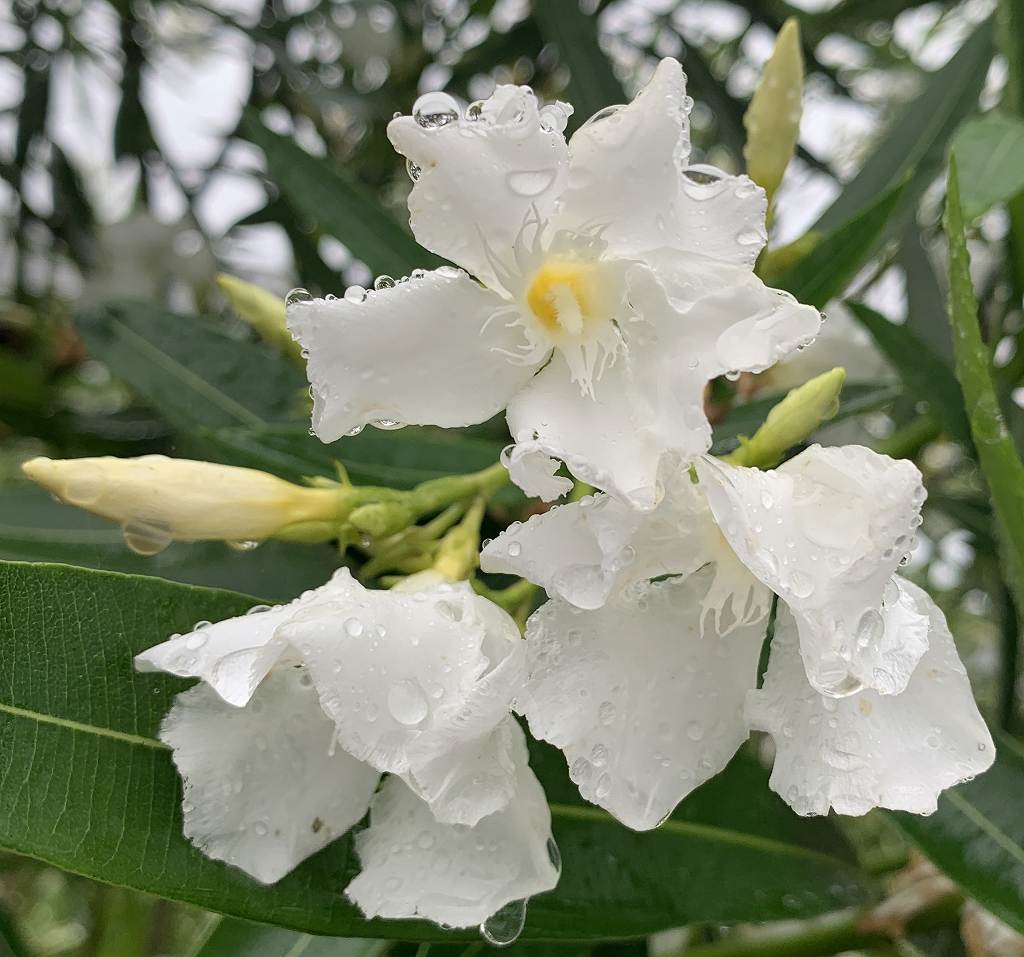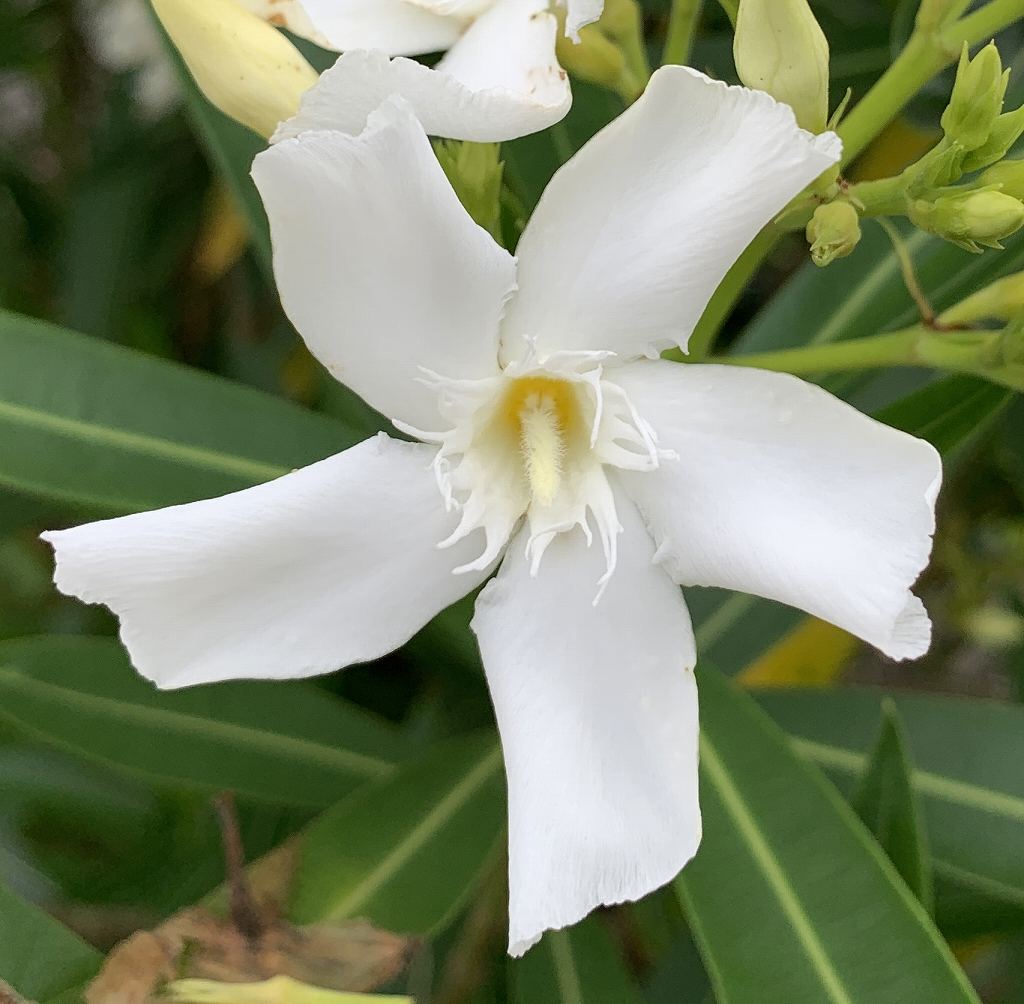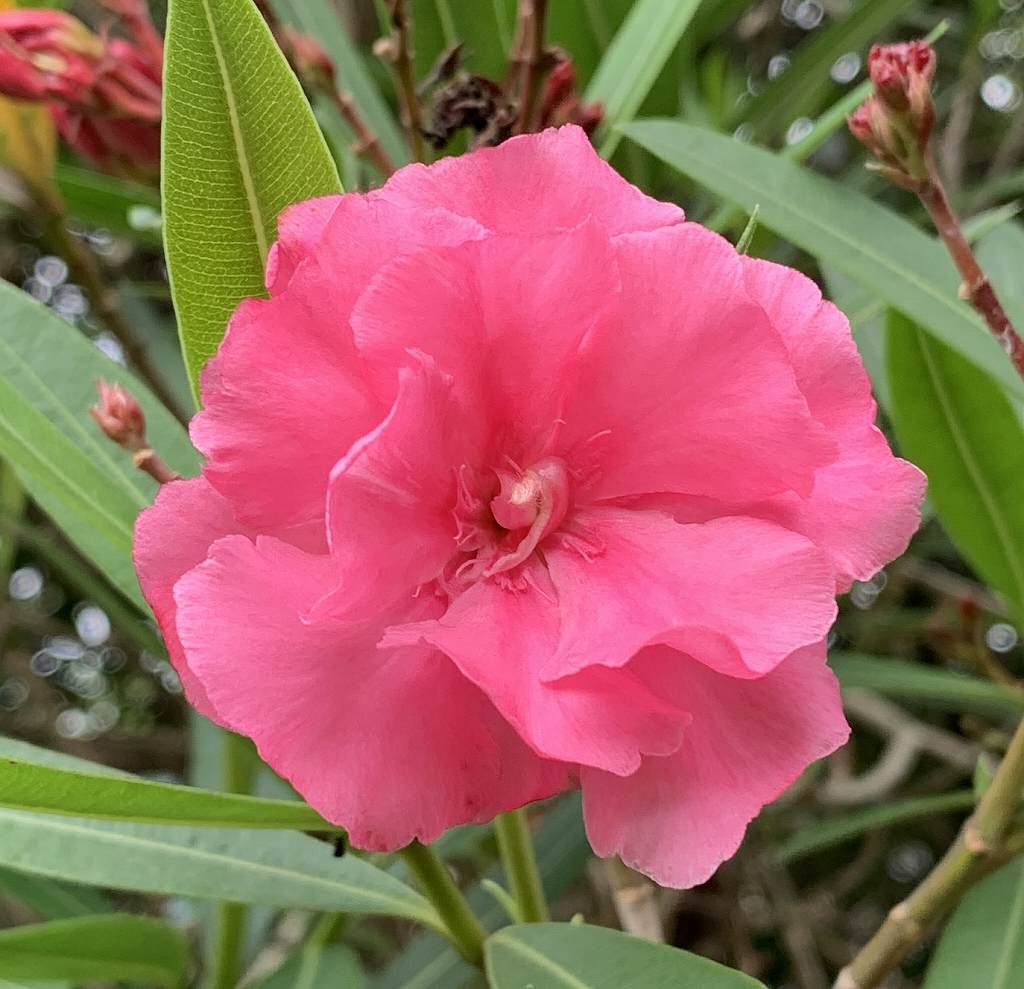キョウチクトウは猛毒を含んでいますが、一重咲きと八重咲の美しい花を咲かせ、乾燥や大気汚染など劣悪な環境でもよく育ちます。
Oleander is extremely poisonous, but it has beautiful single-flowered and double-flowered flowers, and grows well in harsh environments such as dryness and air pollution.
【仮名】キョウチクトウ
【和名】夾竹桃
【英名】Oleander
【学名】Nerium oleander
【誕生】08/ 09, 08/ 12
【開花】07, 08, 09月
【花色】White, Pink



キョウチクトウ
キョウチクトウは、キョウチクトウ科キョウチクトウ属の常緑小高木です。名前の由来は葉がタケに、花がモモに似ているため。インド原産で、わが国には江戸時代中期に伝来しました。
キョウチクトウの花言葉は「用心」「注意」です。これはキョウチクトウに強い毒性があるため。花、葉、枝、根、果実に含まれる成分オレアンドリンは青酸カリの50倍の猛毒です。口に入ると嘔吐、発汗、下痢、不整脈、四肢のしびれ、心肺停止から死亡することも。
フランスではキョウチクトウの枝をバーベキューの串に使ったため、オレアンドリンがしみ込んだ肉や野菜を食べた7人が亡くなりました。わが国でも箸に使って中毒事故が起きています。剪定した枝も燃やすと有毒な煙を出します。さらにキョウチクトウが植わっていた土壌も一年間は毒性が残るそうです。
そのようなキョウチクトウをなぜ植えるのかといえば、乾燥や大気汚染など劣悪な環境でも育つから。自動車の通行が多い道路の脇によく植えられています。むしろ、キョウチクトウの毒性は、有害な虫や小動物たちを遠ざけてくれる働きがあります。
広島では、原子爆弾によって「70年は草木も生えないだろう」といわれた土地で翌年、真っ先にキョウチクトウが紅い花を咲かせます。そのため被爆からの復興のシンボルとして広島市の花となりました。
キョウチクトウは美しさ、危うさ、逞しさをあわせ持つ稀有な花です。
Oleander
Oleander is an evergreen small tree of the genus Apocynaceae of the family Apocynaceae. The name comes from the fact that the leaves resemble bamboo and the flowers resemble peaches. It is native to India and was introduced to Japan in the middle of the Edo period.
The flower language of oleander is “beware” and “caution”. This is because oleander is highly toxic. Oleandrin, a component found in flowers, leaves, branches, roots and fruits, is 50 times more toxic than potassium cyanide. If it enters the mouth, it may cause vomiting, sweating, diarrhea, arrhythmia, numbness in the extremities, and death from cardiopulmonary arrest.
In France, oleander branches were used on barbecue skewers, killing seven people who ate meat and vegetables soaked in oleandrin. In Japan, poisoning accidents have occurred using chopsticks. Burning pruned branches also emits toxic smoke. Furthermore, the soil in which oleander was planted is said to remain toxic for a year.
The reason for planting such oleanders is that they grow even in harsh environments such as dryness and air pollution. It is often planted on the side of roads where many cars pass. Rather, the toxicity of oleander works to keep harmful insects and small animals away.
In Hiroshima, the oleander will be the first to bloom red flowers the following year in a land where it was said that “no vegetation will grow in 70 years” due to the atomic bomb. Therefore, it became a flower of Hiroshima City as a symbol of recovery from the atomic bombing.
Oleander is a rare flower that combines beauty, danger, and sturdiness.


